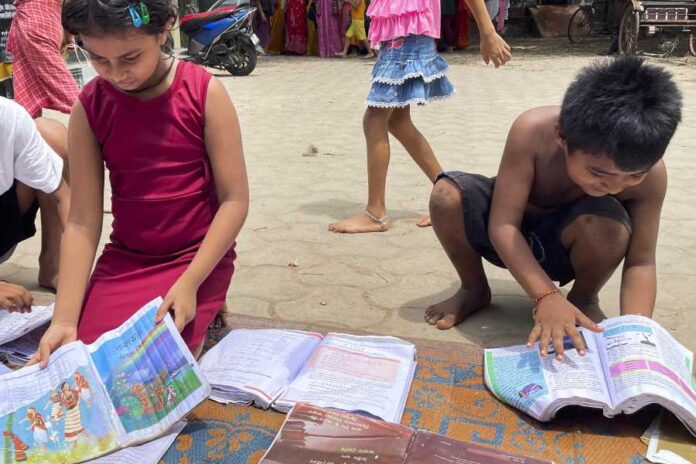Tripura Chief Minister Manik Saha has disclosed that the recent floods in the state have caused an estimated loss of Rs 15,000 crore. The catastrophic flooding, triggered by relentless monsoon rains, has inflicted severe damage on infrastructure, agriculture, and homes, leaving thousands of residents in dire straits. The Chief Minister’s revelation underscores the scale of the disaster and the immense challenges ahead for recovery and rehabilitation efforts.
The Extent of the Flooding
Tripura has been grappling with severe flooding over the past few weeks due to continuous heavy rainfall that has inundated large parts of the state. Rivers like the Howrah, Gomati, and Manu have overflowed, flooding towns, villages, and agricultural lands. The heavy rains have been exacerbated by landslides and erosion, further complicating the situation.
Several districts, including West Tripura, Sepahijala, and Khowai, have been particularly hard-hit. The floods have submerged homes, damaged roads and bridges, and disrupted power and water supplies. Thousands of families have been displaced, and entire communities are struggling with the loss of their homes and livelihoods.
Chief Minister Manik Saha’s Statement
In a press briefing, Chief Minister Manik Saha outlined the staggering economic impact of the floods. “The preliminary assessment of the damage caused by the floods has revealed an estimated loss of Rs 15,000 crore,” Saha said. “This includes extensive damage to infrastructure, agriculture, and residential areas. The floods have left a trail of destruction, and the recovery process will be a monumental task.”
The Chief Minister emphasized that the assessment is ongoing and the final figures could change as more data becomes available. However, the initial estimate highlights the severe economic impact on the state, which will require substantial financial and logistical resources to address.
Impact on Infrastructure and Agriculture
The floods have wreaked havoc on Tripura’s infrastructure. Roads, bridges, and embankments have been severely damaged or washed away, hampering relief and rescue operations. Key transportation routes have been disrupted, complicating the delivery of aid and supplies to affected areas.
Agriculture, a vital sector for Tripura’s economy, has also been hit hard. The floodwaters have inundated vast tracts of farmland, destroying crops and making fields unproductive. The state’s agricultural output is expected to decline significantly, impacting food security and the livelihoods of farmers.
Homes and residential areas have not been spared either. Many houses have been submerged or damaged beyond repair, leaving families homeless and in urgent need of shelter. The destruction of property and the loss of personal belongings have compounded the hardships faced by flood-affected residents.
Government Response and Relief Efforts
In response to the disaster, the state government has mobilized resources to provide immediate relief to affected communities. Relief camps have been set up to provide temporary shelter, food, and medical assistance to those displaced by the floods. The government has also coordinated with the National Disaster Response Force (NDRF) and other agencies to conduct rescue operations and provide aid.
Chief Minister Saha has assured the public that the government is working tirelessly to address the crisis. “We are deploying all available resources to assist those in need and to begin the process of recovery and reconstruction,” he said. “The state government is committed to providing support to affected families and rebuilding the infrastructure and livelihoods that have been lost.”
Challenges and Future Plans
The road to recovery will be long and challenging. The scale of the damage requires a comprehensive approach to rehabilitation and reconstruction. The government will need to assess the full extent of the damage, secure funding, and implement effective recovery plans to restore normalcy in the affected areas.
Additionally, there will be a need for long-term measures to mitigate the impact of future floods. Improving infrastructure resilience, enhancing flood management systems, and investing in disaster preparedness and response are critical steps to ensure that Tripura is better equipped to handle such emergencies in the future.
Community and Volunteer Efforts
Amid the government’s response, local communities and volunteers have played a crucial role in providing immediate assistance. Volunteers have been actively involved in rescue operations, distributing relief supplies, and supporting affected families. Their efforts have been instrumental in addressing the immediate needs of those impacted by the floods.
The floods in Tripura have caused unprecedented damage, with an estimated loss of Rs 15,000 crore as revealed by Chief Minister Manik Saha. The disaster has left a significant impact on infrastructure, agriculture, and residential areas, presenting immense challenges for recovery and reconstruction. As the state embarks on the path to rebuilding, the focus will be on providing relief to affected communities, restoring essential services, and implementing measures to prevent future disasters. The collective efforts of the government, volunteers, and the community will be crucial in overcoming this crisis and helping Tripura recover and rebuild.




